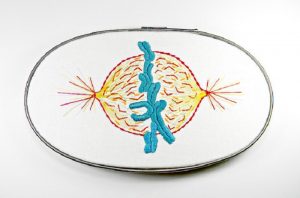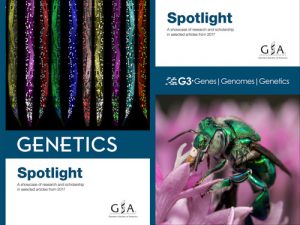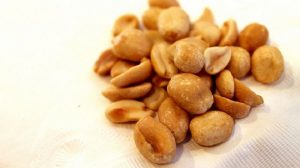Enter your address to receive notifications about new posts to your email.
Science & Publishing
-
Science & Publishing
Athlete’s foot fungus varies little around the globe
Sexual reproduction is scarce in skin infection culprit. While some people love to feel the burn during a workout, we generally seek that sensation in our muscles—not our feet. Treading barefoot in damp, communal environments like gym showers and the perimeters of pools can expose us to the fungus Trichophyton rubrum, the most common cause…
-
Science & Publishing
How an earthquake shook up stickleback genomes
New genetic data help explain the rapid adaptation of stickleback fish that invaded freshwater habitats in the 1960s. In 1964, an earthquake shook the islands off the coast of Alaska, transforming the landscape as underwater terraces were thrust above the surface. From this cataclysmic event emerged a series of freshwater pools that became a natural…
-
Science & Publishing
Remapping lab rats
For the first time in nearly 15 years, the rat genetic map has been updated. Genetic maps help us navigate uncharted data, but to successfully use them to link genes to complex traits, their resolution must be high enough to yield a manageable list of candidate variants. That’s why genetic maps for mice and humans…
-
Science & Publishing
A day in the mouth
Rapid genomic changes observed in Candida albicans soon after exposure to the oral cavity. Whether or not you treat your body like a temple, it presents a hostile and rapidly-changing environment for the many microorganisms that call you home. In contrast to the microbes that hang out inside humans, those that are cultured in the…
-
Science & Publishing
The evolution of protein design
An evolutionary approach outperforms a design approach in modeling protein sequence variation. Over generations, evolution shapes proteins, leading to variation in their amino acid sequences both between and within species. Despite our ever-increasing knowledge of the physical constraints that guide protein structure, advanced modeling techniques don’t capture the site-specific variability observed in natural proteins. Bafflingly,…
-
Science & Publishing
Videos from PEQG18 Keynote and Crow Award sessions
Watch presentations from the conference, including talks from Katie Peichel and Jonathan Pritchard. Now that the dust has settled from the whirlwind of the first ever standalone GSA Population, Evolutionary, and Quantitative Genetics Conference (PEQG18), we’re delighted to be able to share the audio and synched slides from the Keynote and Crow Award sessions. We’re…
-
Science & Publishing
An updated tool for finding the footprints of selection
diploS/HIC uses machine learning to identify selective sweeps in unphased data. A set of footprints can tell us a lot about the creature that left them—without requiring us to see the creature itself. Footprints can suggest the animal’s size, weight, and stride, and from there, we can extrapolate even more information. Much like soft sand…
-
Science & Publishing
Imprinting impulsivity
Imprinted genes can have oppositional effects on adult behavior in mice. Mammalian genomes show the marks of a genetic tug-of-war between mothers and fathers. These imprinted genes are marked by epigenetic modifications, which means the expression of an imprinted allele depends on whether it was inherited from the mother or the father. A new report…
-
Science & Publishing
Building the basement
A suppressor screen in C. elegans uncovers previously unknown flexibility in the genetics underlying extracellular membranes. In nearly all animal tissues, thin barriers called basement membranes anchor outward-facing layers of cells—the linings of lungs, the top layers of skin, the insides of blood vessels—to the connective tissues that support them. Mutations disrupting any major basement…
-
Science & Publishing
GSA Journals Spotlight 2017
The GSA Journals, GENETICS and G3: Genes|Genomes|Genetics, are proud to present our annual Spotlight booklets for research published in 2017. Each Spotlight is a showcase of the excellent research and scholarship published over the course of the year, along with a selection of striking images submitted by our authors. Browse the 2017 GENETICS Spotlight. Browse the 2017 G3 Spotlight.
-
Science & Publishing
Poisoned peanuts: insights into aflatoxin susceptibility
Expression analysis provides clues about what makes some peanut strains more susceptible to fungal toxin contamination. In 1960, 100,000 turkeys across hundreds of English poultry farms died from aflatoxin contamination in the peanut meal in their feed. Aflatoxin is a potent carcinogen produced by fungi of the genus Aspergillus, which can grow on peanuts. Although…












